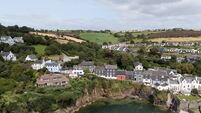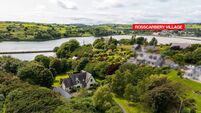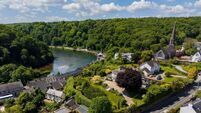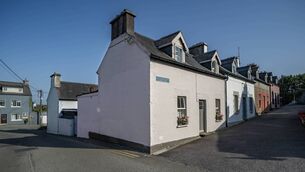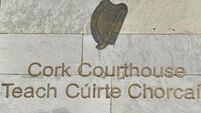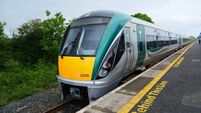Where the sea meets the city
THERE’S always something magical and exotic about a port. When I was a small boy living in Hobart, Tasmania (like Cork, a port city), I would spend hours on summer days hanging around the docks. All the streets seemed to run naturally down to the water.
The water was always a partially glimpsed flat gleam between buildings or the silver-grey end stop to a street, so it was natural to gravitate to the water on hot lazy days.
I would sit and watch the apple boats load for Europe, all with exotic names and places painted on their sterns. Places like Monrovia, (I’m still not sure where that is.) Kids would sit for hours with rods in the water, learning the lesson that fishing wasn’t really about fish.
I’d buy a big bag of scallops fresh from the fishing boat and we’d have them for dinner, smothered in curry sauce, eating till we bloated, all for three shillings
The dock was where our lives met the rest of the world. I would sit and watch the big ships steam slowly down river and project myself into the future with them, imagining all sorts of strange destinations and possible adventures along the way.
In a strange way, I felt somehow connected to the world beyond, as this was the point of arrival and departure, where inside meets outside with all the imaginative colouring that a youthful mind can conjure.
For years I also sailed on the river and came to love being by the water so much that I now find it hard to imagine living in a landlocked city.
Since arriving in Cork almost two years ago, I have wandered all over the city and I’ve discovered all manner of fascinating places, (and I am still discovering them). I’ve sat on sunny afternoons by the Lee in Fitzgerald’s Park where the river still glides along in its natural banks, watched the swans squabbling at the Lough and tossed them chips from Lennox’s, (which they imperiously ignored), meandered along little streets in Shandon, fascinated by architectural details as simple as a pretty doorway or an ancient foot-scraper. I’ve stood on the sweet little metal bridge near the Mercy Hospital under the shadow of Sunday’s Well rising steeply at my back and loved all these places.
But the place that really does it for me is the docklands, the point at the last crossing of the river before it runs free to the sea. The point where big ships can still navigate right to the heart of the city to be welcomed by the sight of the raw and beautiful old warehouses and the glass and steel of the modern city as it rushes down river. The rough, gritty texture of the old storehouses rubs shoulders now with slick cosmopolitanism.
But then cosmopolitan is what Cork always was; port cities are where the cultures mix. I love the dynamism of this place, something always happening, things in flux, comings and goings and the river flowing free of the city at last towards its rendezvous with its other half and on to the Atlantic.
I love the pragmatic architecture of the docks. Cranes, warehouses piles of neatly stacked wood, here today but where tomorrow? There is nothing pretentious here. Form follows function - the massive RH Hall silos (once the site of a fabulous light projection) and the towering smokestacks along Centre Park Road, visible from my window in the Sculpture Factory.
Art and warehouses go hand in hand. Artists move in to old industrial spaces and gradually the centre of gravity of the city shifts towards them, just as it is doing in Cork at the moment. Eighteen months ago the Clarion Hotel didn’t exist at all. Now it’s open for business. There’s a life and flux about the docklands, the shifting panorama of ships and cargo and now the added dynamism of a quarter in rapid transition.
The Idle Hour on Albert Quay welcomes the traveller. Here it’s possible to sit in a seat at the window and notice details like the Jeanie Johnston’s topmasts peeping over the roof, or the warm, worn walls of the Cork Bonded Warehouses and, curiously, the suitcase being slowly lowered over the side of the Japanese fishing boat just outside, exactly like the ones that I would see in my port on the other side of the world.
Maybe, too, this place brings me closer to home and makes sense to me. Its familiarity softens longings for home, it’s just over there after all, just around that slow bend in the Lee.
* Seán Kelly is an artist, writer, occasional performer and arts administrator. He is currently employed as Programme Coordinator at the National Sculpture Factory, Cork.






